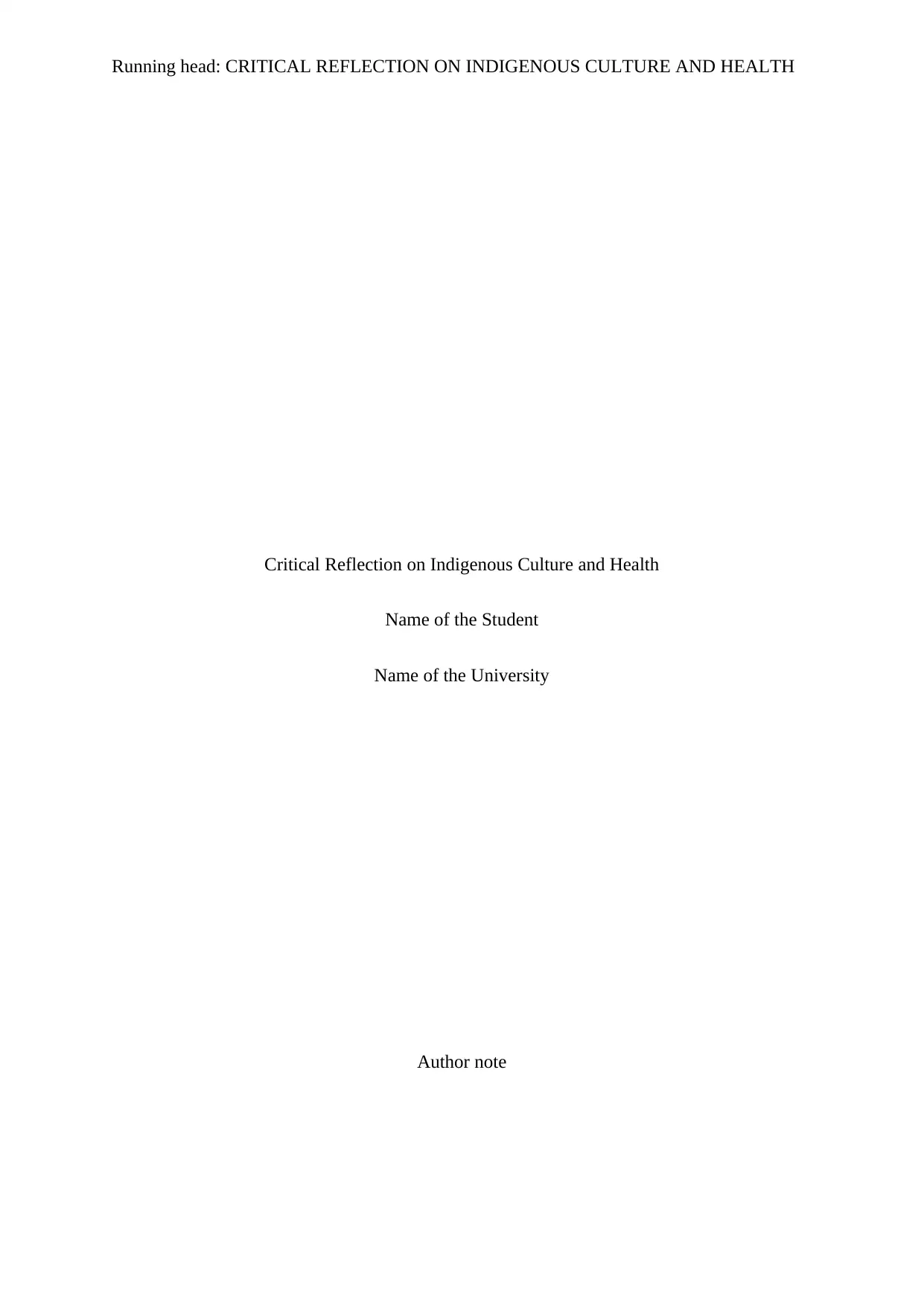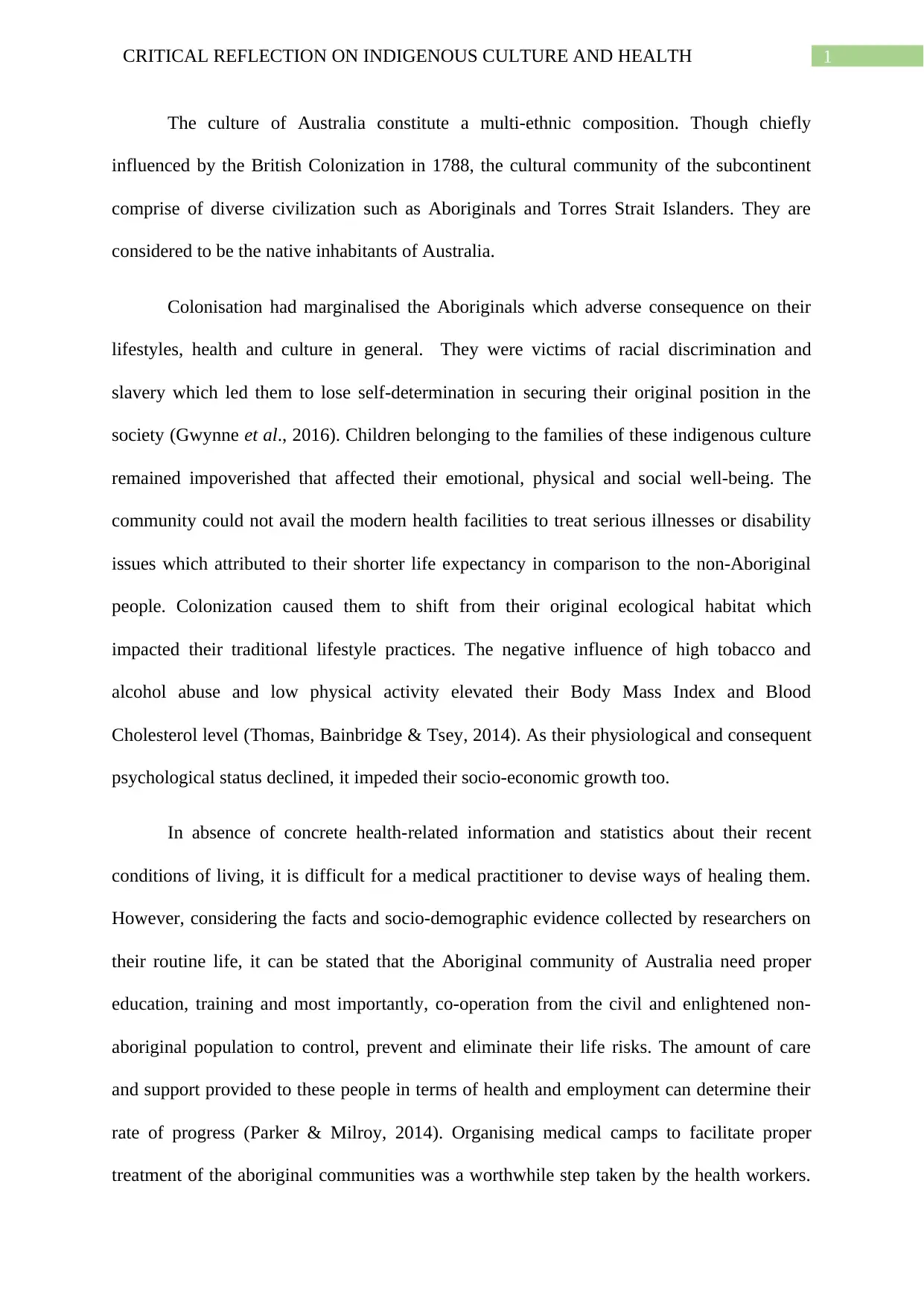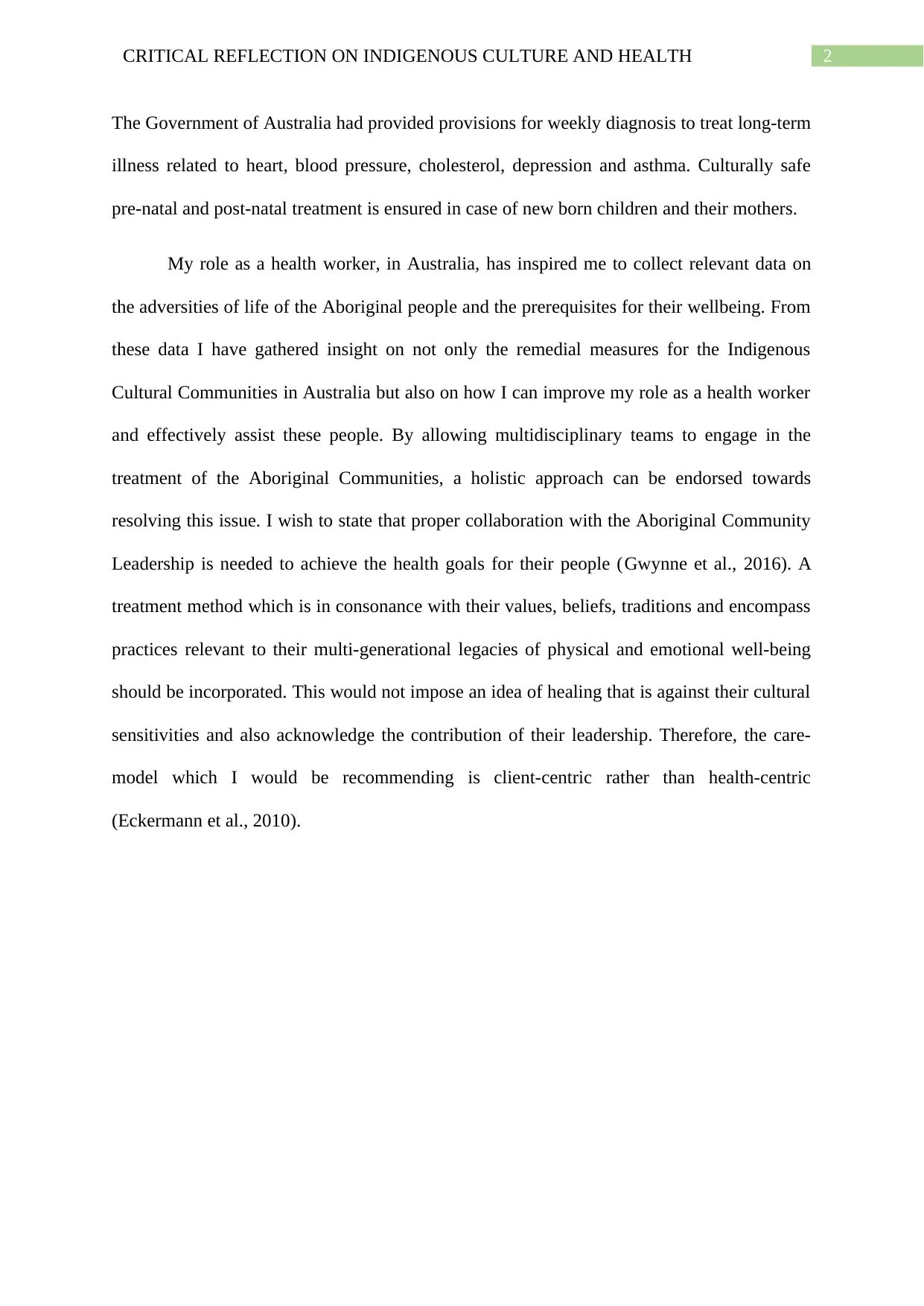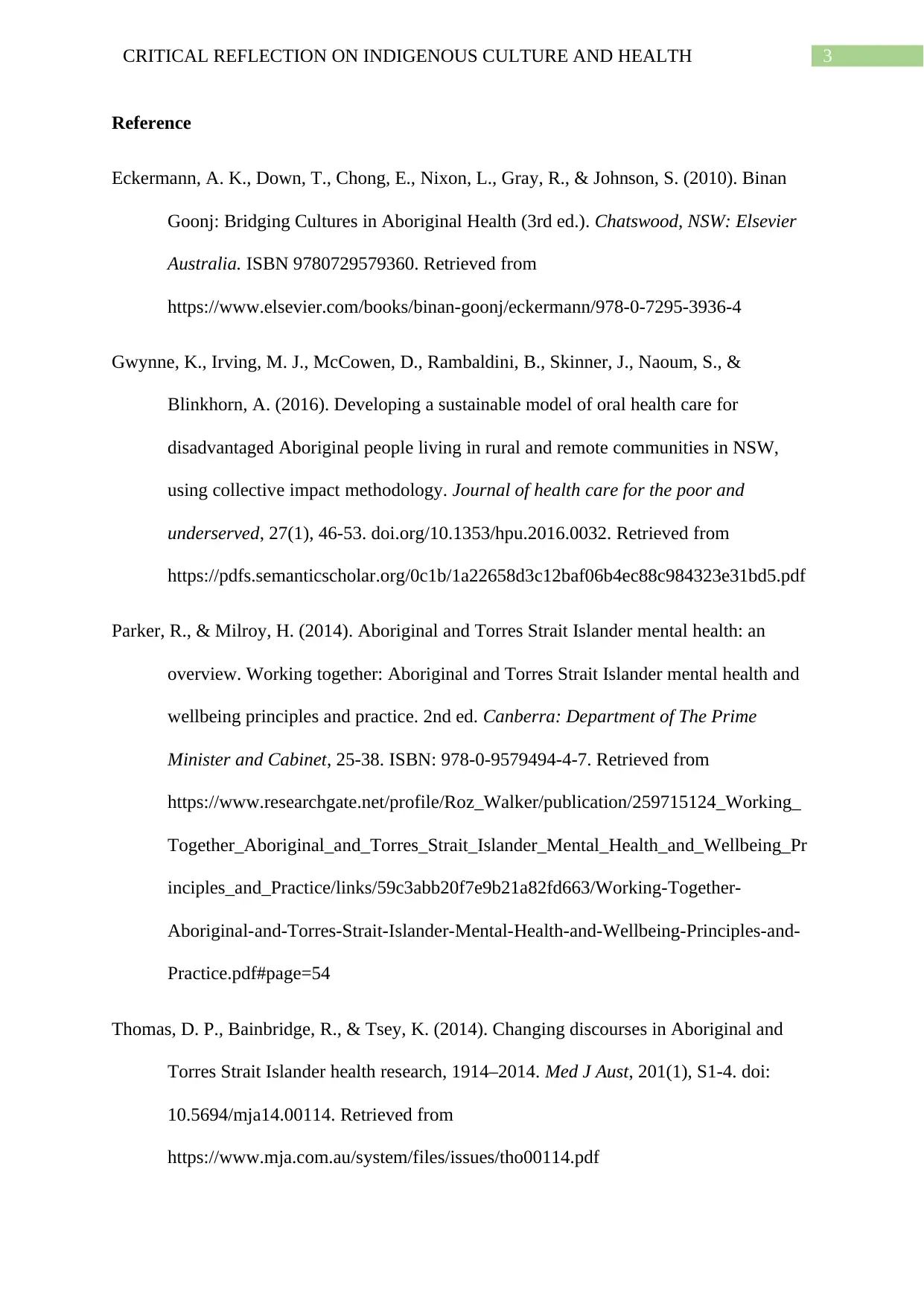ICHB1006: Reflecting on Indigenous Culture, Health, and My Role
VerifiedAdded on 2023/06/08
|4
|902
|196
Essay
AI Summary
This essay provides a critical reflection on Indigenous culture and health in Australia, focusing on the impact of colonization on Aboriginal and Torres Strait Islander peoples. It discusses the marginalization, racial discrimination, and loss of self-determination experienced by Indigenous communities, leading to adverse effects on their lifestyles, health, and culture. The essay highlights the disparities in health outcomes, including shorter life expectancy and increased prevalence of chronic diseases, attributed to factors such as poor access to healthcare, high rates of substance abuse, and displacement from traditional lands. Furthermore, the reflection emphasizes the importance of cultural safety in healthcare practices and advocates for a client-centric approach that respects Indigenous values, beliefs, and traditions. The author, drawing from their experience as a health worker, underscores the need for collaboration with Aboriginal Community Leadership and multidisciplinary teams to address the complex health challenges faced by Indigenous populations. The essay concludes by recommending a care model that aligns with Indigenous cultural sensitivities and acknowledges their multi-generational legacies of well-being.
1 out of 4











![[object Object]](/_next/static/media/star-bottom.7253800d.svg)